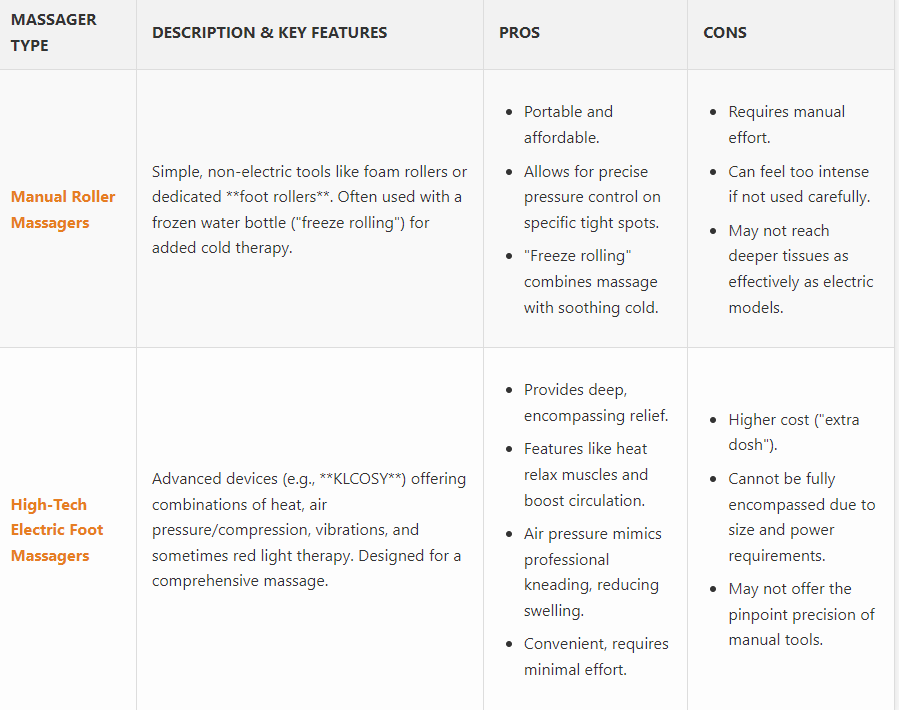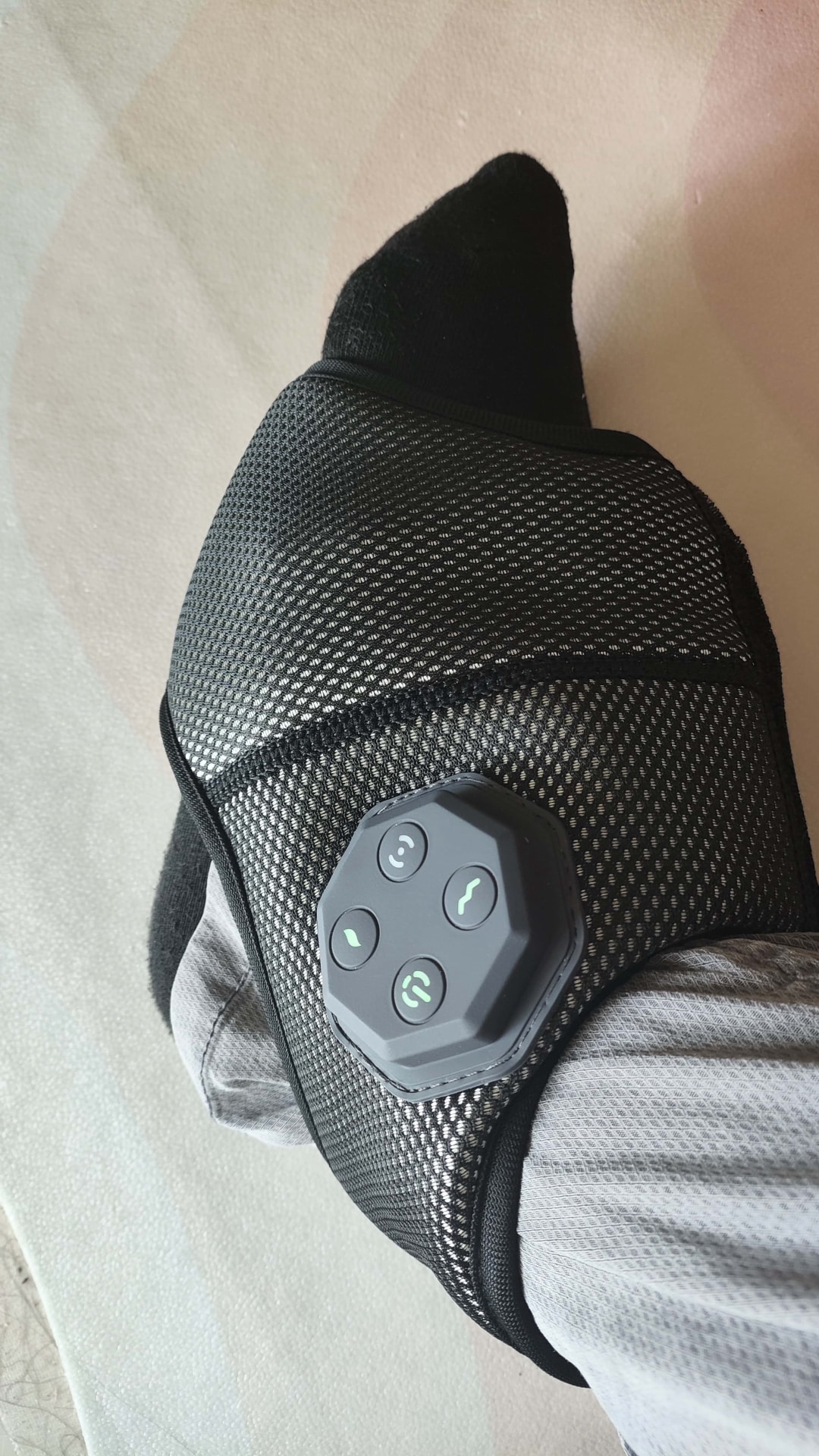Foot Massagers for Plantar Fasciitis: Real Fix for Office Pain?
- By Tony
- Updated on
For many office professionals, the end of a long day often comes with a familiar, unwelcome companion: aching feet. Whether you've been sitting for hours, commuting across the city, or constantly moving between meetings, your feet bear the brunt of your daily grind. This consistent strain can lead to discomfort, fatigue, and in some cases, persistent issues like plantar fasciitis – a common yet debilitating condition that causes sharp heel pain. In the quest for relief, many are turning to home-based solutions, specifically the ever-evolving world of **foot and ankle massagers**. But are these devices a genuine "fair dinkum fix" for stubborn foot pain, or simply an expensive gimmick?
As an occupational health advisor, my aim is to help you navigate the options available for managing workplace-related strain and maintaining your well-being. This guide will explore the effectiveness of various **foot massagers**, compare their features, and discuss how they fit into a comprehensive strategy for keeping your feet healthy and comfortable, especially if you're battling the woes of plantar fasciitis. Let's dig into whether investing in a **foot massager** is truly worth your hard-earned "dosh" and how it might support your long-term foot health.
The Daily Grind: Why Our Feet Rebel
The modern professional lifestyle, often characterized by prolonged periods of sitting at a desk or sporadic bursts of activity during commutes, places unique stresses on our feet. Even with comfortable footwear, the cumulative impact of daily wear and tear can lead to a range of foot complaints. One of the most common and disruptive is plantar fasciitis, an inflammation of the thick band of tissue (the plantar fascia) that runs across the bottom of your foot, connecting your heel bone to your toes. For office workers, factors like insufficient arch support, sudden increases in walking, or even just the fatigue from being on your feet for short but intense periods can trigger or worsen this condition.
When your feet hurt, it doesn't just impact your comfort; it can significantly affect your productivity, focus, and overall mood. Persistent foot pain can make commuting a chore, deter you from staying active, and even disrupt your sleep. Finding effective ways to alleviate this discomfort is crucial for maintaining your well-being and preventing long-term issues.
Decoding Foot Massagers: Are They All Created Equal?
The market for **foot massagers** is diverse, ranging from simple tools to sophisticated electronic devices. Understanding the different types can help you decide which might be best suited to your needs as a professional managing daily foot strain or plantar fasciitis.
Here's a comparison of the main types you'll encounter:

These features are designed to get deep into the muscles and around painful **ankle areas**, offering relief that might feel more akin to a professional massage. The main thought here is, are all those extra features worth the extra "dosh" compared to simpler solutions?
The Promise vs. The Reality: Benefits and Considerations
When considering a **foot and ankle massager**, it's important to weigh the potential benefits against certain considerations. These devices can certainly offer significant advantages, but they also have limitations.
Potential Benefits for Office Professionals:
- Instant Pain Relief: A good **foot massager** can provide immediate comfort, easing the aches and pains accumulated from a day at the desk or on the go. This temporary relief is often enough to make you feel more comfortable and relaxed.
- Improved Circulation: Massage helps stimulate blood flow, which is beneficial for tired feet and can aid in muscle recovery.
- Muscle Relaxation: The kneading, rolling, and compression actions can loosen tight muscles and fascia in the feet and **ankles**, reducing tension.
- Convenience and Accessibility: Having a **foot massager** at home means you can get relief whenever you need it, without scheduling appointments or leaving the house. This makes it an attractive option for busy professionals.
- Potential Support for Plantar Fasciitis: While not a cure, regular use can help stretch the plantar fascia, reduce inflammation, and alleviate symptoms of **plantar fasciitis**, especially when combined with other therapies.
Important Considerations:
- Not a Substitute for Professional Care: It's crucial to understand that a **foot massager** is a supportive tool, not a replacement for a professional diagnosis or treatment from a physio or podiatrist. If you have persistent pain, especially severe plantar fasciitis, professional guidance is essential.
- Risk of Exacerbation: If used improperly or too intensely, some massagers (particularly aggressive rollers) can potentially worsen pain or cause injury. Listening to your body is key.
- Cost vs. Value: High-end models can be a significant investment. You need to consider whether the features justify the price for your specific needs. Are you looking for a general comfort device, or a targeted **plantar fasciitis massager**?
- Durability and Maintenance: Especially in hotter, more humid climates like Brisbane or the Gold Coast, considering how a device will hold up over time is important.
The Aussie Perspective: Finding Your Footing
Across Australia, the conversation around **foot massagers** is diverse, reflecting different lifestyles and needs. From the bustling metropolitan centres to the laid-back coastal towns, people are weighing up whether these gadgets provide a "fair dinkum fix" or are just another passing trend.
Melbourne & Sydney: Performance and Prevention
In cities like Melbourne and Sydney, you'll find a lot of discussion among professionals who spend long hours on their feet, and keen athletes – from runners pounding the pavement to footballers on the field. The talk here often revolves around finding the **best foot massager for athletes Australia** to aid in recovery and performance. They're comparing the high-tech models with heat, air pressure, and red light (like the **KLCOSY**) against simpler, more targeted tools like foam rollers or massage guns. The core desire is to prevent injuries, maintain an active lifestyle, and ensure quick recovery after intense activity.
Brisbane & Gold Coast: Comfort and Convenience
The focus in Brisbane and the Gold Coast leans more towards a relaxed, lifestyle-oriented approach. People are often after something to ease their foot pain after a long day of surfing, working in hospitality, or just enjoying the outdoors. They're asking if these gadgets are a worthwhile substitute for a professional massage and whether they’ll hold up in the hot, humid climate. The purchasing motive is often about comfort and convenience – a quick way to soothe tired feet without much fuss.
Ultimately, the real issue for many is finding a balance between getting some instant relief and actually doing something for the long haul. It's about figuring out if the machine is just a temporary fix or a useful tool to help with a long-term recovery plan that includes things like strength training, wearing appropriate footwear, or using supportive devices like an **ankle brace compression** or a **plantar fascia foot support**.
Making the Right Choice for Your Feet (and Your Wallet)
Deciding to **buy foot massager** is a personal choice, but a well-informed one can make all the difference for managing daily foot strain or alleviating symptoms of plantar fasciitis. Here are some pointers to consider:
How to Choose a Foot Massager:
- Identify Your Needs: Are you seeking general relaxation, targeted relief for **plantar fasciitis**, or post-workout recovery? This will guide your choice between a simple roller and a feature-rich electric model.
- Consider Features: If you suffer from cold feet or muscle stiffness, heat therapy might be beneficial. If you prefer deep, encompassing relief, look for models with air compression or shiatsu kneading. For pinpoint accuracy, a manual roller or a dedicated **plantar fasciitis massager** might be better.
- Budget: Determine what you're willing to spend. There are effective options at various price points, from basic **foot rollers** to advanced electric devices that cost more "dosh."
- Read Reviews: Look for feedback from other users, especially those with similar foot conditions or lifestyle demands.
- Portability: If you travel frequently or want to use it at the office, consider the size and weight.
How to Use a Foot Massager Safely and Effectively:
- Start Slowly: Begin with shorter sessions and lower intensity settings to see how your feet react.
- Listen to Your Body: If you feel sharp pain, stop immediately. Massage should be comfortable and provide relief, not cause distress.
- Combine with Other Strategies: For conditions like plantar fasciitis, integrate massage with stretching exercises, proper footwear, and potentially supportive gear like an **ankle brace compression support** or night splints.
- Consult a Professional: If your pain persists, worsens, or is severe, always seek advice from a healthcare professional like a podiatrist or physiotherapist. They can provide a proper diagnosis and tailored treatment plan.

In summary, **foot and ankle massagers** can indeed be a valuable tool in your arsenal for managing foot pain, enhancing comfort, and supporting recovery, especially for busy office professionals grappling with the demands of their daily routines or the persistent ache of plantar fasciitis. They offer convenience and immediate relief that can significantly improve your quality of life.
However, it's vital to view them as a component of a broader wellness strategy, not a standalone miracle cure. While a **plantar fasciitis massager** can certainly help alleviate symptoms, it works best when integrated with professional advice, stretching, appropriate footwear, and possibly complementary support like an **ankle brace compression** or **plantar fascia foot support**. So, are they a "fair dinkum fix"? For many, they absolutely are – a powerful ally in the fight against tired, aching feet, providing comfort and support on the path to long-term foot health.
Frequently Asked Questions About Foot Massagers and Plantar Fasciitis
What is a foot and ankle massager?
A foot and ankle massager is a device designed to apply pressure, kneading, vibration, or heat to the muscles and tissues of your feet and **ankles**. These devices come in various forms, from simple manual rollers to complex electric machines with multiple settings like air compression and targeted heat, aiming to relieve tension, improve circulation, and alleviate pain.
Are foot massages good for plantar fasciitis?
Yes, foot massages can be beneficial for plantar fasciitis. Massage helps to stretch the plantar fascia, release tension in the surrounding muscles (like the calves), and improve blood flow to the affected area, which can reduce inflammation and pain. Regular massage, especially targeting the arch and heel, can complement other treatments for plantar fasciitis.
Do foot massagers help plantar fasciitis?
Many users report that **foot massagers** help alleviate symptoms of plantar fasciitis by providing temporary pain relief and improving flexibility in the foot and **ankle**. While they are not a cure, they can be an effective part of a comprehensive management plan. The best results are often seen when used consistently and in conjunction with stretching exercises, supportive footwear, and professional medical advice.




